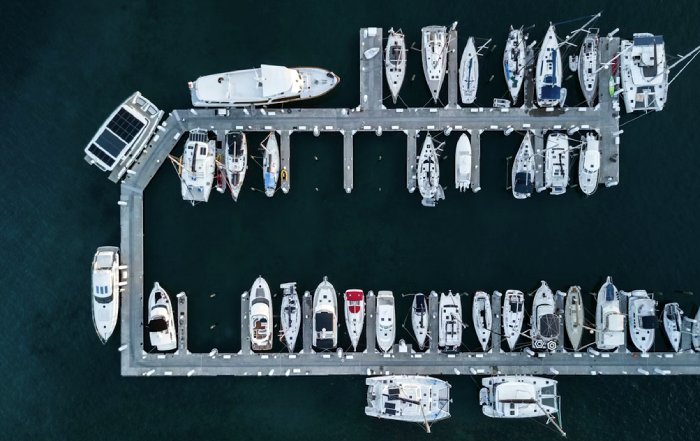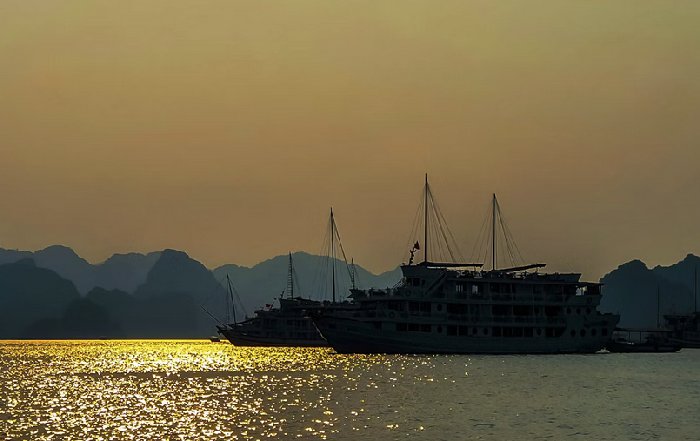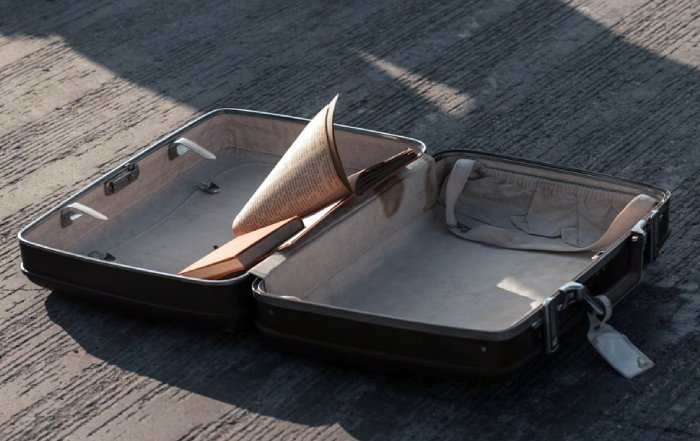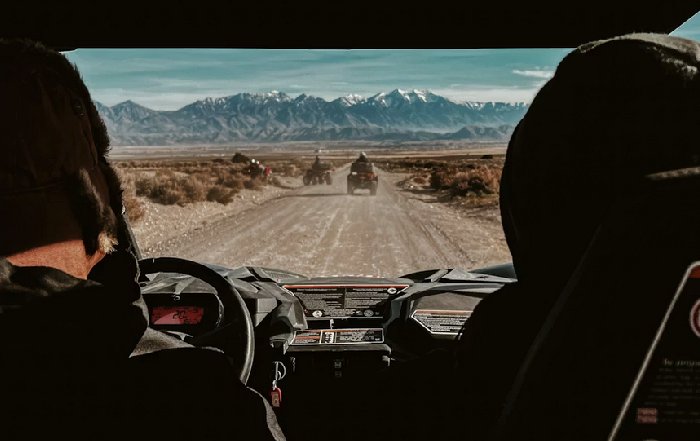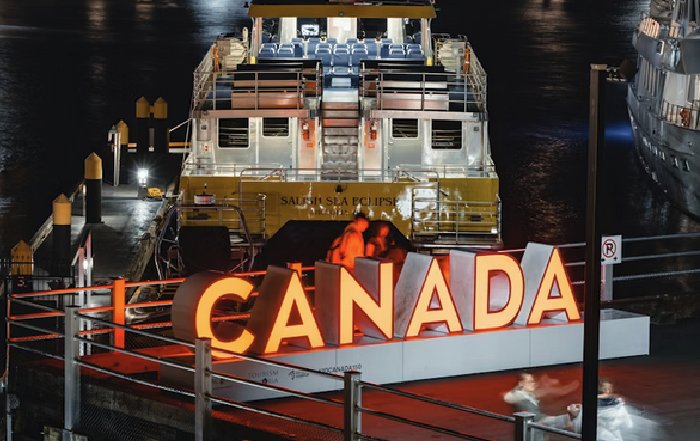Cruising the Netherlands' Inland Waterways: A 2025 Strategic Guide for Discerning Yachtsmen
The Netherlands as a Modern Inland Cruising Powerhouse
In 2025, the Netherlands stands at the forefront of inland cruising, offering one of the most sophisticated, accessible and well-managed networks of rivers, canals and lakes anywhere in the world, and for the business-minded yacht owner or charter operator, the country's waterways present not only a refined cruising experience but also a compelling case study in maritime infrastructure, sustainable development and high-value nautical tourism. From the perspective of yacht-review.com, which has long followed the evolution of European cruising grounds, Dutch inland waters now represent a mature, strategically important destination where design innovation, operational efficiency and lifestyle expectations converge in a uniquely coherent way, making it increasingly relevant to owners and charter guests from North America, Europe and Asia who expect both comfort and commercial-grade reliability from their time on the water.
The Dutch approach to water management, shaped over centuries of living below sea level, has resulted in a dense network of interconnected routes that can carry a yacht from the German border to the North Sea, and from the Belgian frontier to the northern provinces, with an infrastructure that blends commercial shipping, private leisure craft and charter fleets in a manner that remains remarkably safe and predictable. This is not a wilderness cruising ground in the traditional sense; it is a meticulously engineered environment where locks, bridges, marinas and service facilities are integrated into a national system that is closely regulated yet welcoming to international visitors, and where the expectations of a demanding clientele from the United States, the United Kingdom, Germany, Canada, Australia and beyond can be consistently met. For those evaluating destinations through the lens of experience, expertise, authoritativeness and trustworthiness, the Netherlands offers a benchmark in how inland cruising can be organized and delivered.
Infrastructure, Regulation and Navigational Confidence
The cornerstone of the Dutch inland cruising proposition is the reliability of its infrastructure, and in 2025 the national waterway authority Rijkswaterstaat continues to invest heavily in maintaining locks, dredging channels and modernizing bridge systems that are essential to both commercial and leisure traffic. The main arteries such as the Amsterdam-Rhine Canal, the IJsselmeer, the Waal and the Maas are managed with an attention to detail that gives private yacht owners an unusually high degree of confidence when planning multi-week itineraries, and for those accustomed to the variable conditions of rivers in North America, South America or parts of Asia, the predictability of Dutch depths, signage and traffic control can be a refreshing contrast. Navigational information is updated continuously, and digital tools from organizations like ANWB Waterwegen and official hydrographic services make it straightforward to plan routes, check bridge heights and understand local regulations.
For readers of yacht-review.com, accustomed to in-depth assessments of operational risk, the Dutch system stands out as a model of best practice, and it is no coincidence that many European inland charter operators base their fleets here, leveraging the robust regulatory framework and the country's reputation for maritime professionalism. International captains can consult official guidance from bodies such as the European Commission's transport directorate to understand broader rules governing inland navigation across the continent, while national resources provide specific instructions for Dutch waters, including speed limits, priority rules and environmental restrictions. Those exploring vessel options or considering refits tailored to inland cruising can complement this regulatory insight with the technical perspectives available on yacht-review.com's technology coverage, which increasingly highlights systems optimized for shallow-draft, low-air-draft navigation.
Yacht Types, Design Considerations and Dutch Expertise
Choosing the right vessel for the Netherlands' inland waterways is a strategic design decision that goes beyond aesthetics, and it is here that the country's long-standing shipbuilding expertise becomes especially relevant. Traditional Dutch steel motor cruisers, often built by renowned yards in Friesland and Gelderland, have been refined over decades to meet the specific challenges of low bridges, narrow locks and sometimes shallow canals, with hull forms that prioritize stability at low speeds, efficient displacement cruising and robust construction capable of withstanding the occasional contact with lock walls or quays. Air draft is a critical parameter, and many purpose-built inland yachts feature folding masts, collapsible biminis and low-profile superstructures that allow access to routes which would be closed to taller vessels, particularly in historic city centers such as Utrecht, Haarlem and Leiden.
From a design standpoint, the Netherlands has also been a laboratory for hybrid propulsion, electric drivetrains and noise-reduction technologies that are increasingly in demand among environmentally conscious owners, and many of the innovations now seen in global yacht design have their roots in Dutch experimentation on inland waters. Builders and naval architects with strong reputations in the region recognize that cruising through dense urban environments and protected natural reserves requires exceptionally quiet, low-emission operation, and they have responded with integrated systems that reduce wake, minimize fuel consumption and facilitate shore-power connections in modern marinas. Readers seeking a deeper analysis of how these technical trends intersect with aesthetics and onboard comfort can explore yacht-review.com's design insights, which often draw on Dutch case studies to illustrate broader movements in yacht architecture.
Key Cruising Regions: From Randstad Cities to Northern Lakes
The geographic diversity of the Netherlands' inland waters is one of its greatest strengths, and a well-planned itinerary can move seamlessly from cosmopolitan cityscapes to pastoral villages and open lakes within a matter of hours. The Randstad region, encompassing Amsterdam, Rotterdam, The Hague and Utrecht, offers a distinctly urban cruising experience where yachts glide past converted warehouses, cutting-edge architecture and historic canals lined with 17th-century houses, and while larger superyachts typically remain in commercial harbors or on the IJ, smaller inland cruisers can penetrate deep into the old city centers, mooring within walking distance of cultural landmarks, Michelin-starred restaurants and high-end retail districts. For international guests arriving from the United States, the United Kingdom or Asia, this proximity to major airports such as Schiphol and Rotterdam The Hague Airport enhances the logistical appeal of Dutch cruising, enabling short transfers from long-haul flights to the yacht.
Moving north and east, the provinces of Friesland, Groningen and Overijssel present a contrasting landscape of lakes, meandering waterways and small towns that have evolved into sophisticated hubs for water sports and family-oriented tourism, and the Frisian Lakes in particular are a magnet for sailing enthusiasts and motor-cruiser owners who value open water, well-equipped marinas and a relaxed, community-oriented atmosphere. The historic town of Sneek, for example, blends a strong maritime heritage with contemporary amenities, hosting regattas and festivals that attract visitors from Germany, Scandinavia and further afield, while also offering excellent facilities for long-stay cruising. Those interested in how these regional variations shape the overall experience will find relevant context in yacht-review.com's cruising coverage, which examines similar contrasts in other European and global destinations.
Lifestyle, Culture and Onshore Experiences
While the technical and infrastructural aspects of Dutch inland cruising are compelling, the true value proposition emerges when one considers the lifestyle and cultural experiences available along the routes. The Netherlands is densely populated yet remarkably green, with many waterways passing directly through historic centers, nature reserves and agricultural landscapes that have been carefully preserved or restored, and this juxtaposition allows yacht owners and guests to craft itineraries that balance high-culture experiences with quiet, reflective time on the water. In Amsterdam, visitors can moor within easy reach of institutions such as the Rijksmuseum and the Van Gogh Museum, exploring world-class collections before returning to the privacy of their yacht, while in smaller cities like Delft, Leeuwarden or Maastricht, moorings are often just steps away from medieval squares, local markets and traditional restaurants.
For a business-oriented audience, the lifestyle dimension is also a question of value creation and brand alignment, as many corporate charters and executive retreats now seek destinations that communicate sophistication, environmental awareness and cultural depth, and the Netherlands offers a particularly strong narrative in this regard. Guests from Germany, France, Italy, Spain, Switzerland and other European markets often appreciate the ease with which they can combine meetings, cultural visits and relaxed cruising without the logistical complexity associated with larger, ocean-going yachts, and this has made Dutch inland cruising an increasingly important segment within the broader European yacht charter market. Those seeking inspiration for how to integrate such experiences into broader travel plans can consult yacht-review.com's lifestyle section, which explores similar synergies between onboard life and onshore discovery.
Business Opportunities and the Economics of Inland Cruising
From a business perspective, the Netherlands' inland waterways represent a sophisticated, relatively low-risk environment for investment in charter operations, marina development and related services, and the country's stable political climate, strong legal system and advanced financial sector make it particularly attractive to investors from North America, Asia and other parts of Europe. The growth of experiential tourism, coupled with a rising preference for smaller, more intimate travel formats, has created demand for high-quality inland cruising products that can be marketed to affluent clients seeking alternatives to traditional ocean cruising, and Dutch operators have been quick to respond with premium charter offerings, bespoke itineraries and value-added services such as guided cultural tours, culinary experiences and wellness programs.
For those evaluating the sector, it is instructive to consider how Dutch inland cruising fits within broader trends in global tourism and hospitality, as documented by organizations such as the UN World Tourism Organization, which tracks shifts in traveler behavior and the increasing emphasis on sustainability, authenticity and personalization. The Dutch model, with its emphasis on integrated transport, strong environmental regulation and community engagement, aligns closely with these trends, positioning the country as a reference point for other regions seeking to develop or modernize their own inland cruising sectors. Readers interested in the commercial and strategic dimensions of this evolution can find complementary analysis in yacht-review.com's business coverage, which frequently examines how changing consumer expectations are reshaping yacht ownership and charter models worldwide.
Sustainability, Regulation and Environmental Leadership
Environmental stewardship is no longer optional in the yachting world, and the Netherlands has emerged as a leader in implementing and enforcing sustainable practices on its inland waterways, setting standards that are increasingly influencing neighboring countries and even global norms. Emission controls, waste management requirements and noise regulations are enforced consistently, and many municipalities now require or strongly encourage the use of shore power in marinas, limiting the use of generators and thereby reducing air and noise pollution in densely populated areas. The Dutch government's broader climate commitments, aligned with frameworks such as the European Green Deal, are driving further innovation in low- and zero-emission propulsion, including fully electric and hydrogen-powered vessels that are already being tested or deployed in commercial and leisure contexts.
For yacht owners and operators, this regulatory environment demands a proactive approach to sustainability, both to ensure compliance and to meet the expectations of increasingly environmentally conscious clients from markets such as Sweden, Norway, Denmark, Finland, Canada and New Zealand, where green values are deeply embedded in consumer decision-making. Adopting best practices in energy efficiency, waste reduction and route planning not only protects sensitive ecosystems but also enhances brand reputation and long-term asset value. Those wishing to explore the intersection of yachting and environmental responsibility in more detail can refer to yacht-review.com's sustainability coverage, which regularly highlights practical strategies and emerging technologies that support cleaner operations, and can supplement this with broader perspectives from international organizations that encourage readers to learn more about sustainable business practices.
Family-Friendly Cruising and Multi-Generational Appeal
One of the most distinctive advantages of cruising the Netherlands' inland waterways is the high degree of safety and accessibility they offer to families, including those with children and older relatives, and this makes the region particularly attractive for multi-generational trips where comfort, predictability and a moderate pace are essential. The generally calm waters, limited tidal influence and carefully managed traffic flows reduce the risk of seasickness and other discomforts that can affect less experienced passengers on open-sea voyages, while the short distances between towns and attractions mean that itineraries can be structured around frequent stops, onshore activities and flexible daily schedules. For families from the United States, the United Kingdom, Germany, France, Italy, Spain and beyond, this combination of gentle cruising and rich cultural content can be a powerful draw.
Dutch marinas and waterfront towns are typically well-equipped with playgrounds, cycling paths, museums and interactive attractions that cater to younger visitors, and the country's strong emphasis on safety and child-friendly infrastructure further enhances its appeal. Educational opportunities abound, from visits to historic shipyards and maritime museums to interactive science centers and nature reserves that illustrate the country's ongoing battle with the sea. For those planning such journeys, yacht-review.com's family-focused content offers insights into how to structure itineraries, select vessels and manage onboard life in ways that keep all generations engaged, while also respecting local regulations and cultural norms that contribute to the overall sense of security and well-being.
Technology, Connectivity and the Modern Onboard Experience
In 2025, connectivity and digital integration have become non-negotiable components of the onboard experience for many yacht owners, charter guests and crew, and the Netherlands is exceptionally well-positioned to meet these expectations thanks to its world-class telecommunications infrastructure. High-speed mobile networks provide reliable coverage across most inland waterways, allowing for seamless remote work, streaming, real-time navigation updates and communication with shore-based services, which is particularly important for business travelers who need to remain connected to offices in North America, Europe or Asia while cruising. Many marinas offer robust Wi-Fi, and the integration of smart systems on modern inland yachts enables remote monitoring, energy management and security oversight that align with contemporary expectations of digital convenience.
The broader technological ecosystem surrounding Dutch inland cruising also includes advanced navigation apps, online booking platforms for bridges and locks, and digital reservation systems for marinas and mooring spots, all of which contribute to a more streamlined and predictable experience. For a readership that values technical sophistication and operational efficiency, these developments underscore the Netherlands' position as a forward-looking destination where innovation is not an abstract concept but a daily reality. Those seeking a more detailed exploration of how such technologies are reshaping yachting globally can turn to yacht-review.com's technology section, which analyzes emerging trends from electric propulsion and automation to data-driven route optimization and predictive maintenance.
Historical Context and the Legacy of Dutch Waterways
Understanding the present-day appeal of Dutch inland cruising requires an appreciation of the historical forces that created and shaped the country's waterways, and in this regard the Netherlands offers a narrative that is both technically fascinating and culturally rich. Many of the canals and river modifications that yachts traverse today were originally constructed for trade, defense or land reclamation, with major works dating back to the Golden Age of the 17th century and even earlier medieval engineering projects. Cities like Amsterdam, Leiden and Haarlem owe much of their layout and economic development to canal systems that facilitated the movement of goods and people, and these same waterways now serve as the backbone of a thriving leisure cruising sector that has repurposed historic infrastructure for contemporary enjoyment.
For historically minded yacht owners and guests, the opportunity to follow routes that once carried merchant fleets, military vessels and trading barges provides a sense of continuity that is rare in modern travel, and the careful preservation of locks, bridges and waterfront architecture adds depth to the experience. Museums, heritage centers and guided tours provide context, explaining how water management, shipbuilding and maritime trade shaped not only the Netherlands but also global commerce and exploration. Readers who wish to delve deeper into these themes can explore yacht-review.com's history coverage, where Dutch case studies often serve as a lens through which to examine the broader evolution of yachting and seafaring traditions worldwide.
Positioning the Netherlands in a Global Cruising Strategy
For the globally minded yacht owner or charter operator, the Netherlands' inland waterways should be considered not in isolation but as part of a broader portfolio of cruising options that includes Mediterranean coasts, Scandinavian fjords, North American lakes, Asian archipelagos and emerging destinations in Africa and South America. What distinguishes the Dutch offering is its combination of reliability, cultural richness, environmental leadership and business-friendly conditions, which together create a compelling platform for both leisure and commercial activity. In an era when geopolitical uncertainty, climate risk and regulatory complexity can complicate long-range cruising plans, the Netherlands provides a relatively stable, predictable and high-quality environment that can anchor a European cruising strategy or serve as a testbed for new concepts in chartering, technology deployment or sustainable operations.
The country's central location within Europe, excellent transport links and integration with wider inland waterway networks make it an ideal starting point or hub for itineraries that extend into Germany, Belgium, France and beyond, and many owners now view time in the Netherlands as part of a broader European season that might also include Mediterranean or Baltic segments. For readers of yacht-review.com evaluating where to allocate time, capital and attention over the coming years, the Dutch inland waterways merit serious consideration as a core component of a diversified cruising plan that balances adventure with assurance, innovation with tradition and personal enjoyment with long-term value creation. Those seeking to align their own strategies with these opportunities can explore the broader editorial landscape at yacht-review.com, where reviews, news, regional insights and community perspectives collectively support informed, confident decisions in a rapidly evolving yachting world.


